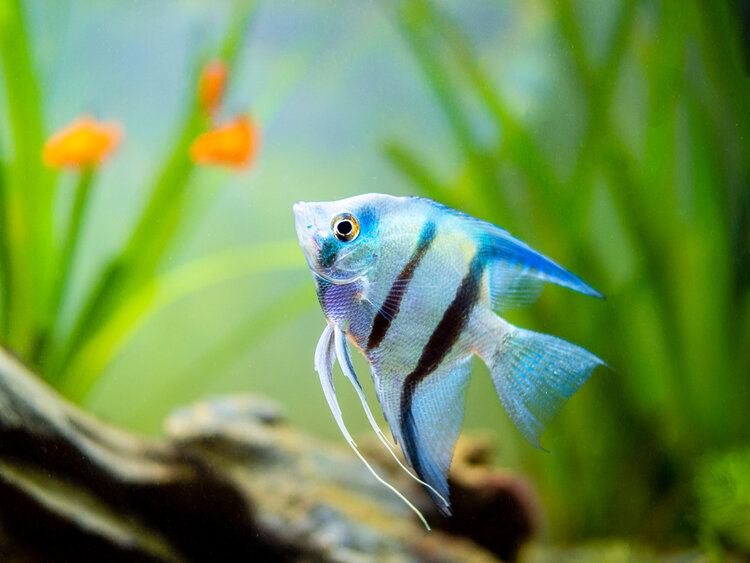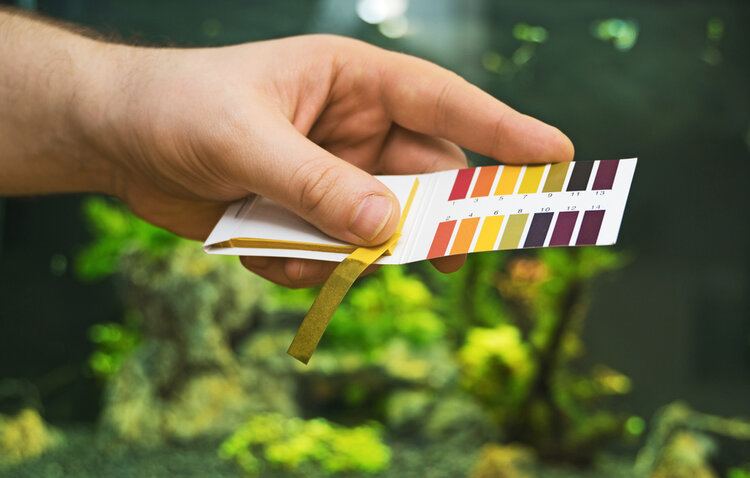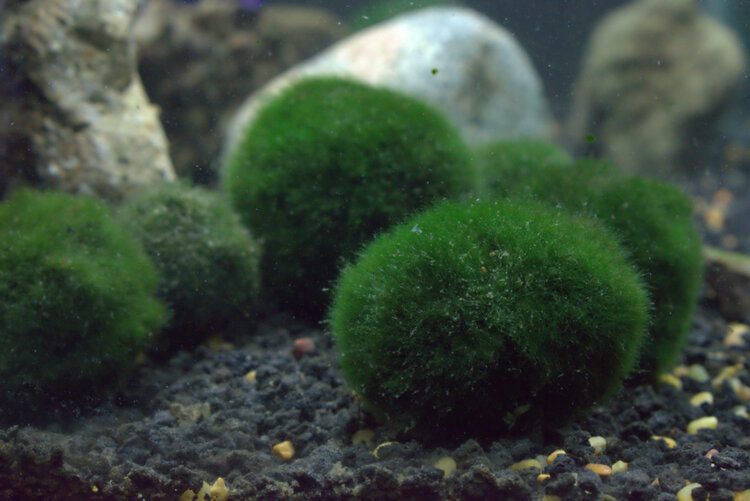How Many Angelfish Can You Have in a 65 Gallon Tank? Facts & FAQs

Updated on

Angelfish are some of the most beautiful tropical aquarium fish that you can keep at home. They are colorful, they are quite lively, and they have a very neat shape as well. If you are planning on getting an angelfish, you might be wondering how many you can get and what size of tank you need.
If you are wondering “how many angelfish in a 65-gallon tank?”, the answer is no more than 3. Each Angelfish requires a minimum of 20 gallons of tank space. Angelfish can get quite large, and therefore, each one does require a good deal of space to be happy and healthy.

How Many Angelfish Should be Kept Together?
Angelfish are schooling fish, which means that they like to be kept with their own kind.
Most experts would recommend keeping angelfish in schools of 5 or 6 at the least. If you have enough tank space, there is no reason why you cannot keep more than 6 together at once.
That said, angelfish should not be kept alone. These fish have very competitive natures and they compete for the top spot in the hierarchy within the school, something that can be quite entertaining to see.
Can I Have Just One Angelfish?
Something that you should never do is attempt to keep a single angelfish all alone by itself. Once again, these are schooling fish and they find safety in numbers.
They do not do well on their own and are likely to become stressed, anxious, and depressed if they are kept solo.
Minimum Tank Size for Angelfish

Angelfish can grow up to 6 inches in length. Usually, the rule is to have 1 gallon of water per inch of fish, which would mean that an angelfish would only need 6 gallons of water.
However, angelfish actually grow very tall, not just long, as well, they are very competitive and territorial, so they do like to have a lot of space.
The official recommendation is that each angelfish has 20 gallons of tank space. Twenty gallons is the minimum tank size per angelfish, as they do require lots of space.
Angelfish Housing Requirements
Angelfish are not the easiest fish to care for, but also not the hardest. If you follow the housing requirements outlined below, you should have no problems keeping your angelfish happy and healthy.
Water Temperature
First off, in terms of water temperature, angelfish prefer fresh and warm water that is kept between 78 and 84 degrees Fahrenheit.
Therefore, unless you live in a tropical climate, chances are very big that you will need to get an aquarium heater to maintain this relatively warm water temperature. Angelfish do not do well in cold water.

Water Hardness
Next, angelfish prefer their water to be quite soft, with a KH rating no higher than 8, but no lower than 3.8 KH is very soft water.
This means that you may need to purchase some water conditioner to ensure that the water is soft enough to sustain angelfish.
These fish are sensitive to high concentrations of dissolved minerals, so this does need to be kept in check.
Water pH

Angelfish prefer their water to be fairly neutral in terms of acidity, or in other words, they prefer the water to be slightly alkaline.
For angelfish, the acceptable pH range is 6.8 to 7.8. This means that they can handle very slightly acidic water but do best in neutral or slightly alkaline water.
Filtration
Angelfish are not overly messy, and they do not prefer high flow rates either. A simple trickle filter or low flow canister filter will do fine here. Many people even prefer using under-gravel filters for angelfish tanks.
However, the problem with under-gravel filters is that they don’t really perform any chemical filtration, so this will need to be done on the side.
As long as your filter can handle about twice the total water volume in the tank every hour, engages in all 4 major forms of aquarium filtration, and does not create a strong current, you are on the right track.
Lighting
A normal aquarium light will be fine for angelfish. In the wild, they are usually found in dimly lit areas, often with overhanging vegetation.
Sure, you do want to get them a light, but something basic will suffice, just something to mimic some natural daylight.
Substrate
Angelfish do enjoy digging in the substrate and foraging around for food. Therefore, you need to use a fine and soft substrate, mainly something that does not have sharp edges, as sharp edges can cause injuries to your angelfish.
The best way to go for angelfish substrate is with some basic aquarium sand or some very smooth, small, and fine gravel.
This will allow them to dig and forage without risking an injury such as a torn fin.
Plants & Decorations

In terms of plants and decorations, angelfish are often surrounded by fallen trees in the wild, so a bit of driftwood will go a long way.
You can add some larger rocks to the mix just to make them feel at home, although this is not 100% necessary.
In the wild, angelfish often live under overhanging vegetation, and therefore, either some floating plants or some tall plants with big leaves are ideal.
Tank Mates
Angelfish can be some very territorial and aggressive fish. After all, they are cichlids. Many would actually recommend that you keep angelfish in a species-only tank, which means no other tank makes but other angelfish.
These are ultimate opportunists and they will not hesitate to eat any other fish which they can fit in their mouths.
Some acceptable angelfish tank mates include Corydoras, peaceful barbs, large tetras, large rasboras, and gouramis.
FAQs
How Big do Angelfish Get?
Angelfish usually top out at around 6 inches in length, although they can also grow very tall, almost as tall as long, if not actually taller. They are quite rounded.
How Many Angelfish per Gallon?
You cannot keep any angelfish in a single gallon of water. A single angelfish needs 20 gallons of tank space.
How Many Angelfish in a 40 Gallon Tank?
Seeing as a single angelfish needs 20 gallons of tank space, a 40 gallon tank could comfortably fit two of them.
Can Angelfish Kill Each Other?
Angelfish can kill each other, although it is rare. They are territorial and will often fight for dominance, but usually not to the point of seriously injuring each other.
Final Thoughts
There you have it folks, everything you need to know about caring for angelfish, particularly in terms of how much room they need.
They may not be the easiest fish to care for, but they sure are beautiful and entertaining.
Image Credit: Joan Carles Juarez, Shutterstock













